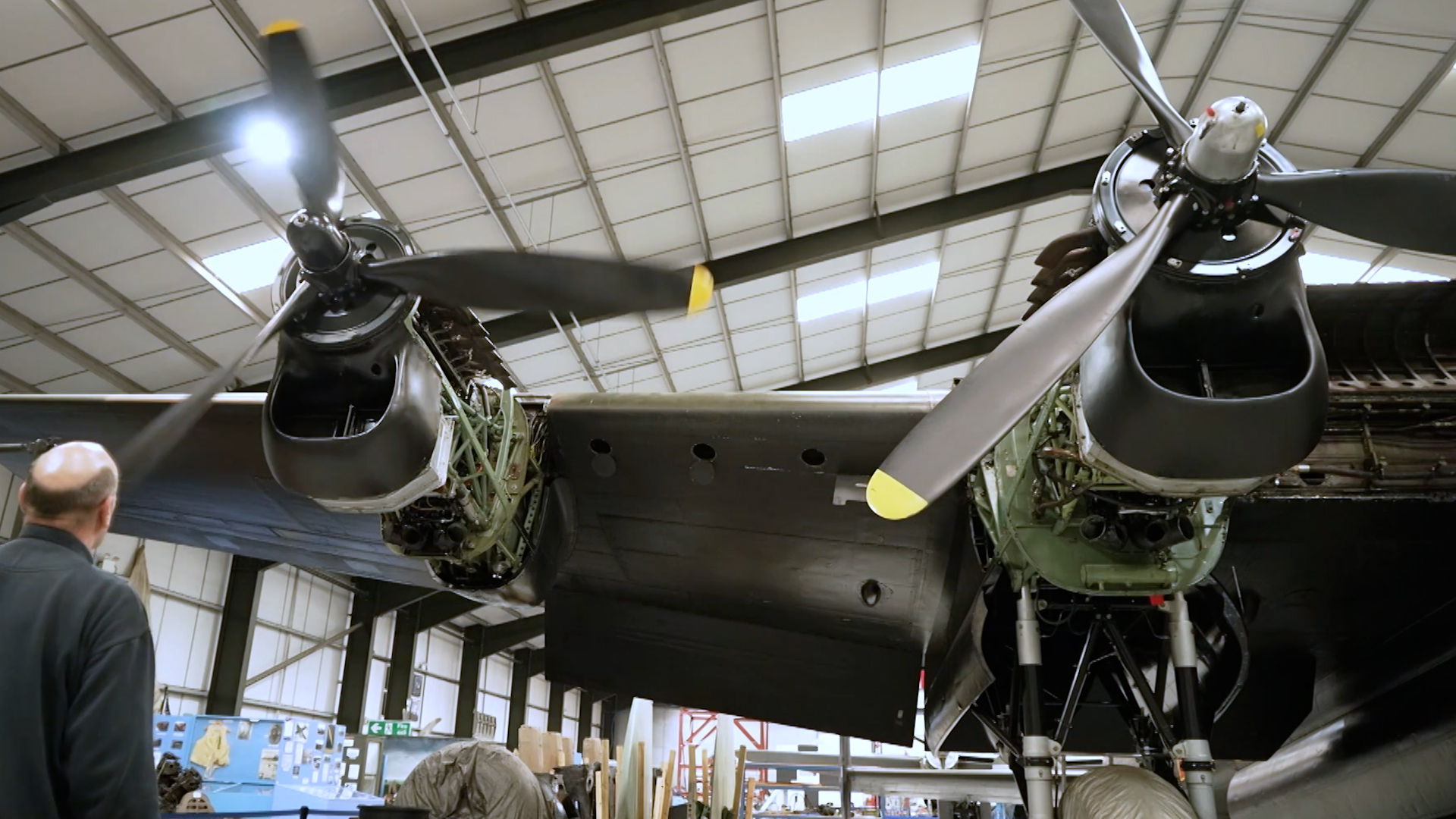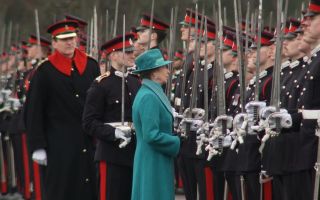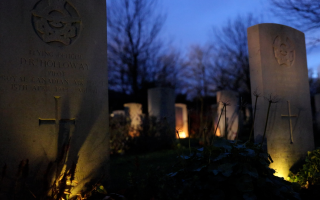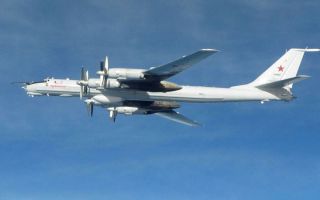Avro Lancaster: The iconic British WW2 bomber that took the fight straight into the heart of Nazi Germany
For staunch aviation fans, the impressive, thunderous roar of the Avro Lancaster – one of the most famous and successful heavy bombers of the Second World War – is immediately recognisable.
A mainstay of the Royal Air Force's Bomber Command from the moment it came into service in 1942, the strategic bomber, crewed by seven men, was designed by Roy Chadwick and powered by four Rolls-Royce Merlin V12 engines.
Capable of carrying the war into the heart of Hitler's Nazi Germany, 7,377 were built in Britain and Canada – but just two are flying today.
The Lancaster came into service at a time when the Allies had secured successes defensively to prevent invasion.
But there was a desperate need to take the fight into Germany and so, with a range of up to 2,530 miles depending on its load and capable of carrying almost its own weight in bombs, the Lancaster changed the course of aviation history.
The much-loved 'Lanc', as it became affectionately known by those who flew it, took part in many of the most famous missions during the Second World War, but its work left painful scars on the memories of those who flew it.
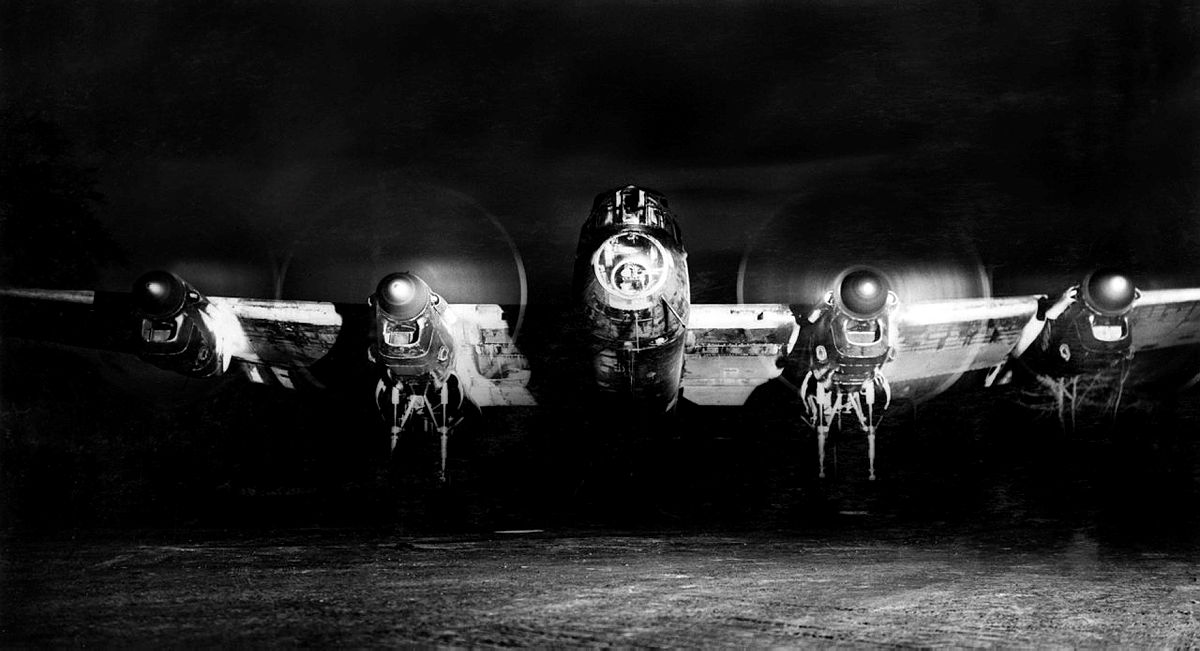
Feature documentary Lancaster, from the filmmakers behind the box office hits Spitfire and Armstrong, focuses on the men who flew the heavy bombers – the average age of the crew was just 22 years.
Before his death in 2020, RAF veteran Peter Kelsey, of 186 Squadron, was interviewed for the documentary.
He explained how flying in the Avro Lancaster during the Second World War left life-long damage to his mental health, saying: "I fought my war from five miles up.
"I dropped, at one time, seven or eight tonnes of bombs on somewhere, came back, had my breakfast, out on the booze the next day and thought nothing of it.
"It was totally another world, but I realised that what I had done was fundamentally wrong, but the circumstances were such that we did it and I can't reconcile those two points, I can't reconcile them."
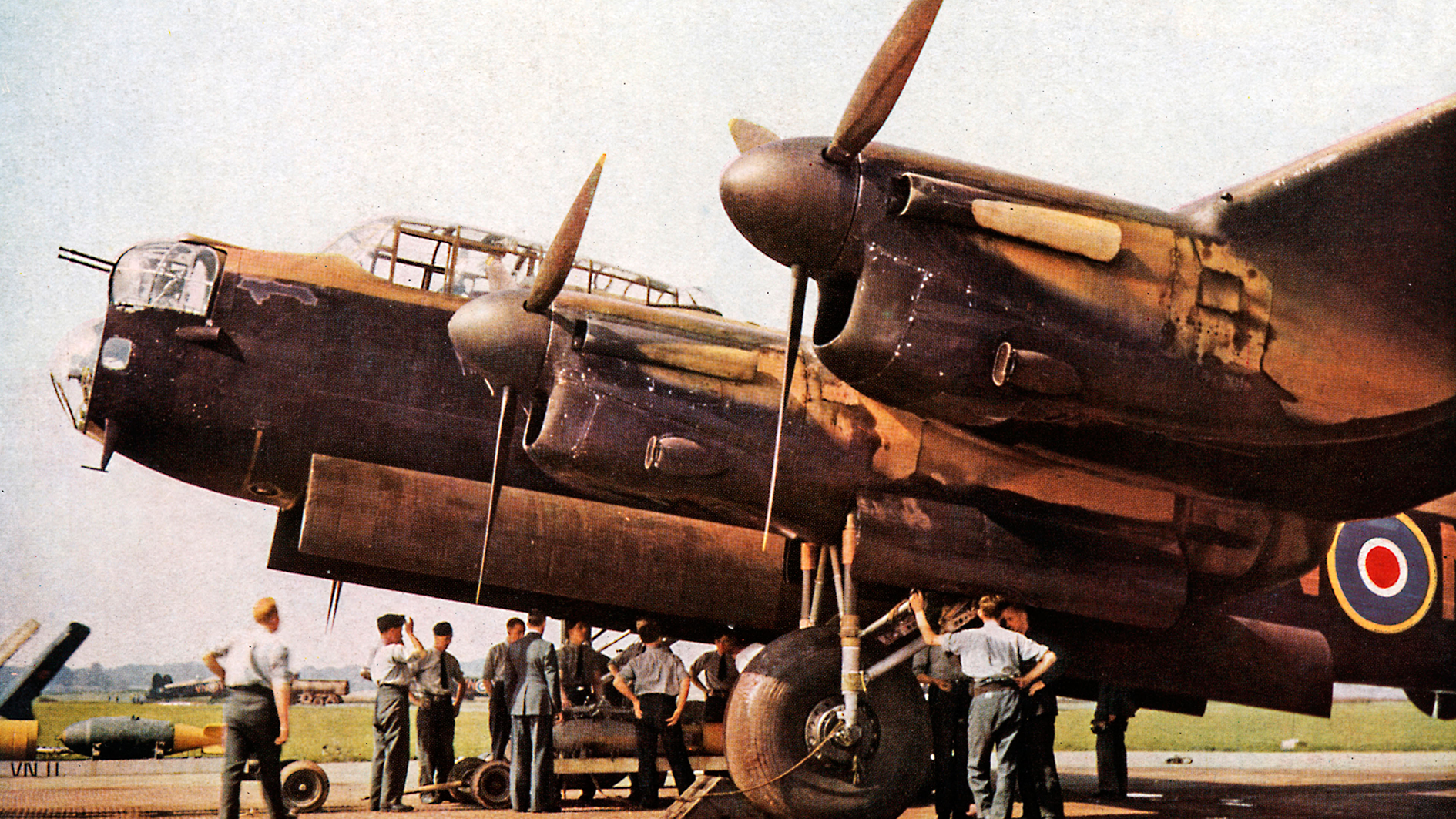
Dambuster Raids
Depicted in the 1955 war film The Dam Busters, one of the most famous operations of the Second World War was the Dambusters raid – a plan to destroy dams in Nazi Germany's industrial heartland and cut off vital supplies in the Ruhr Valley.
Codenamed Operation Chastise, the raid took place 80 years ago between 16 and 17 May 1943 and was a success in part because of the vital role the iconic Lancaster played.
It was the only aircraft capable of carrying the famous Bouncing Bomb, a deadly incendiary device that could skip across water, designed by British engineer Barnes Wallis.
David Keen, an aviation historian, spoke to Forces News about how vital Lancasters were in the success of the Dambusters raid and the knock-on effect that win had on the rest of the war, saying: "The Lancasters had to be heavily modified.
"They lost their bomb doors, they lost some of their armament and the mid-upper turret went to enable them to carry out the raid.
"Three dams were attacked – the Möhne Dam, which was breached, the Eder Dam and the Sorpe Dam was damaged but not breached.
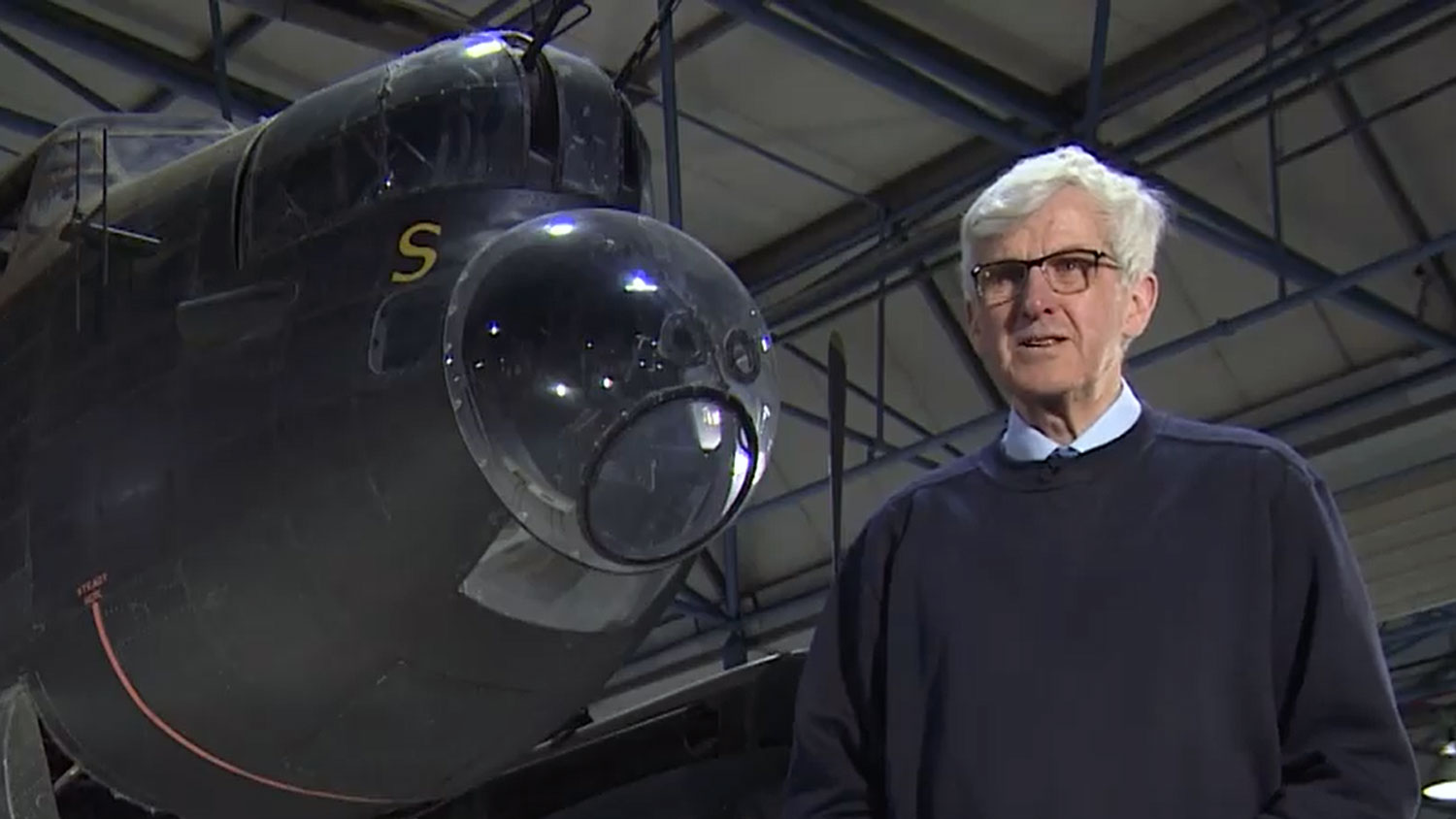
"To repair those dams, Albert Speer, the Reich Minister for Armaments, had to divert something like 10,000 labourers from defensive works on the Atlantic War to repair the dams in Germany, and that meant that when D-Day came, in 1944, perhaps the Atlantic War wasn't as well prepared as it might have been."
Led by Wing Commander Guy Gibson, a total of 133 Allied aircrew left for the raid on 19 Lancaster bombers.
Tragically, 53 men were killed and three became prisoners of war.
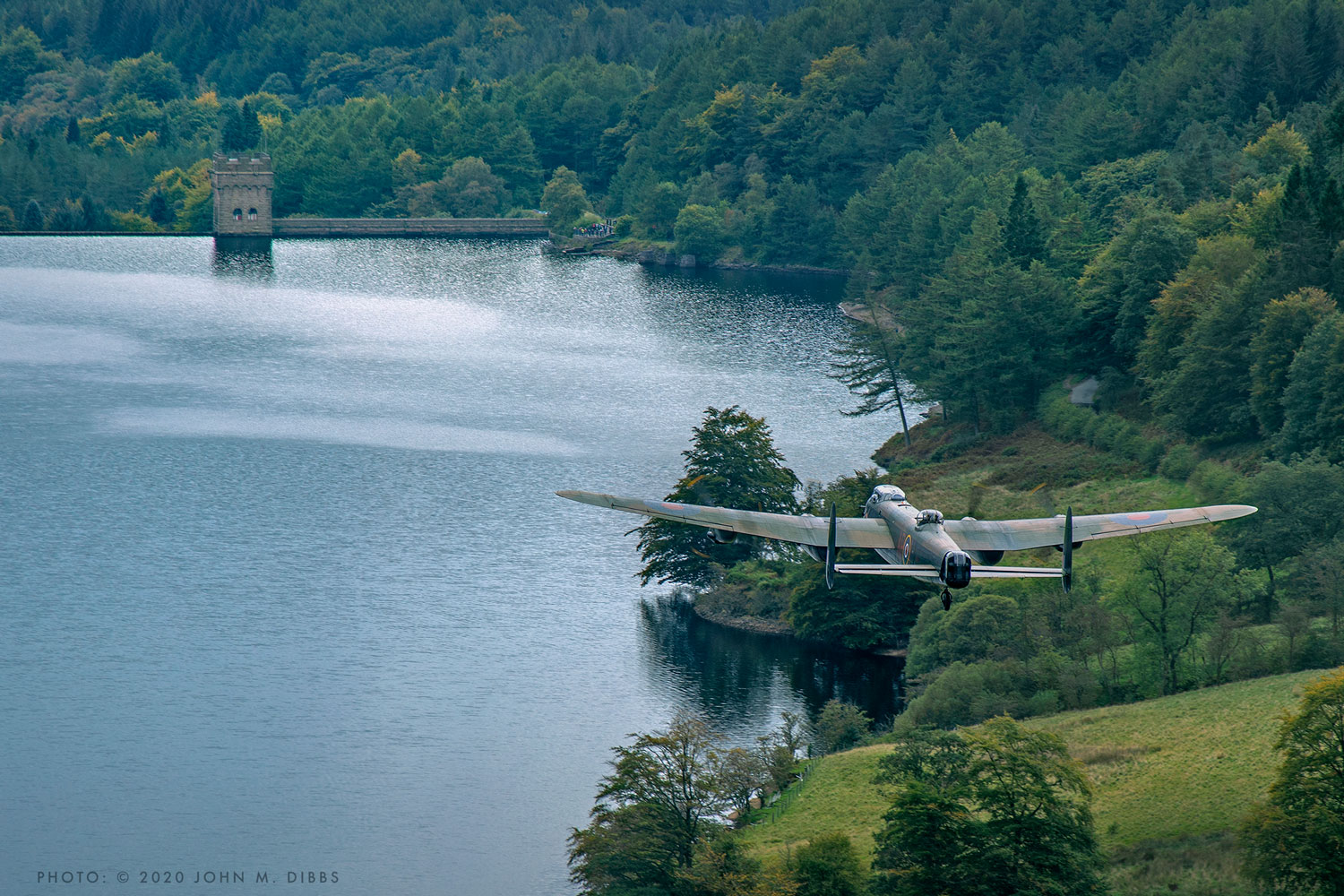
Dresden
From the Dambuster raids to the controversial bombing of Dresden, the Avro Lancaster helped turn the tide of war, but there was a deadly price to be paid.
Between 13 and 15 February 1945, 13 sq miles of the historic German city of Dresden were bombed to a pile of rubble and burning embers, leaving 25,000 men, women and children dead – the aftermath of thousands of tonnes of high explosives dropped by British and American bombers.
The raid is considered highly controversial as it took place just two months before the surrender of Nazi Germany to the Allies on 7 May 1945.
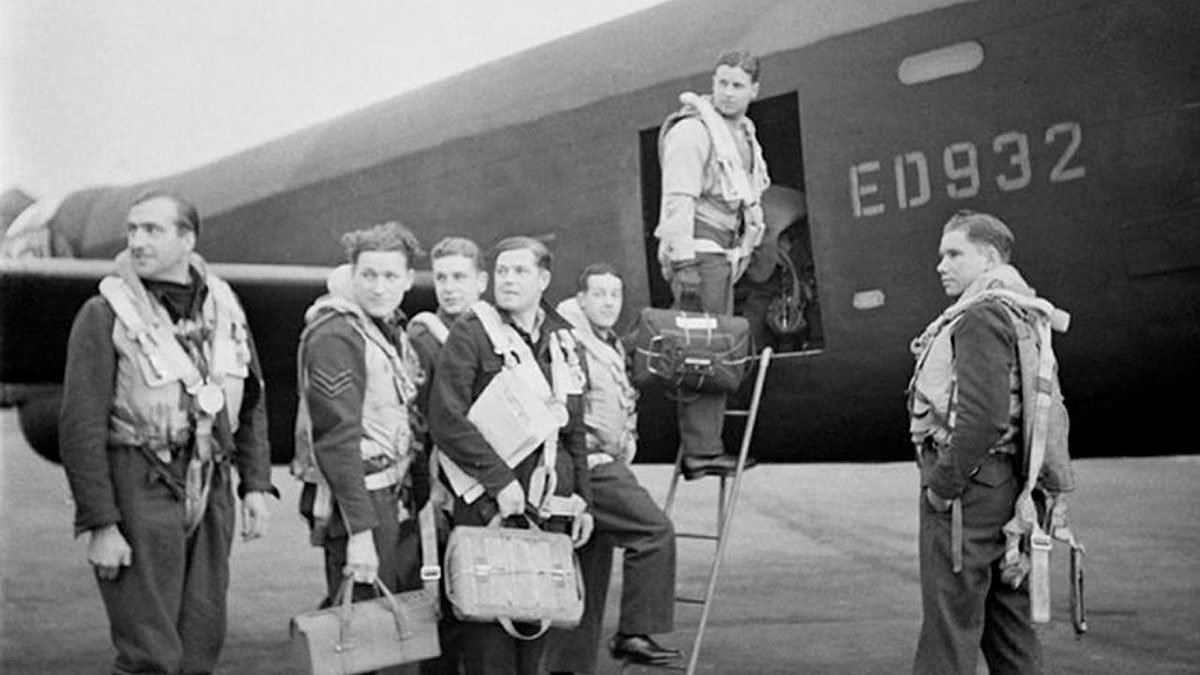
In the feature documentary Lancaster, veteran pilot Rusty Waughman, who was a Flight Lieutenant in 101 Squadron during the Second World War, spoke of his experience flying the legendary aircraft, saying: "I was 20 years old, very naïve, didn't have any experience of life at all.
"You knew you were facing death all the time.
"Night after night after night. But it's just a thing you accepted."
During the Second World War, Lancasters flew about 156,000 raids, dropping an estimated 50 million incendiary bombs and 608,000 tons of explosive devices to devastating effect.
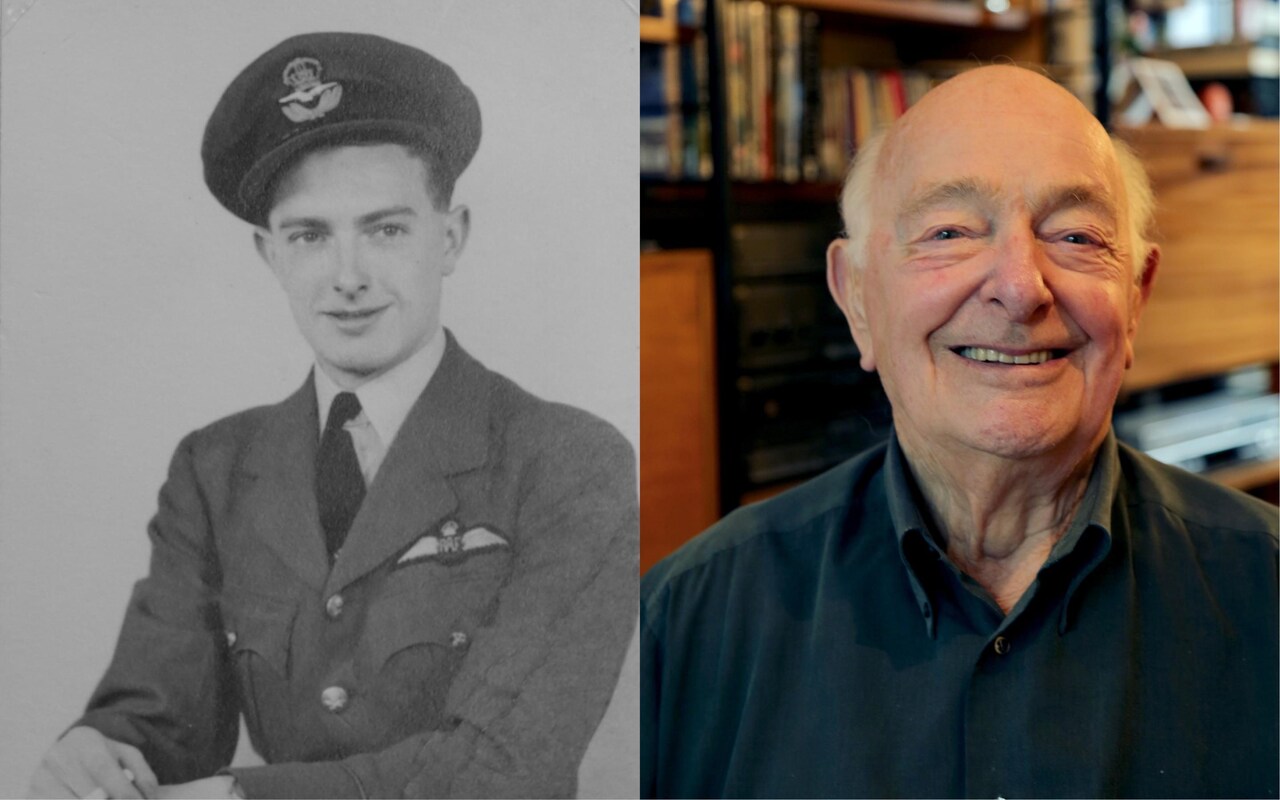
About half of Bomber Command's 120,000 aircrew, 55,573 to be precise, were killed over Nazi-occupied Europe – the highest casualties of any unit in the Second World War and 15 times more people than those who serve in the RAF today.
The average number of missions completed by Lancasters before being lost was 21.
According to the Bomber Command Museum, 3,932 of the Lancasters produced were shot down during the Second World War, at a total cost of £186,770,000 – or £7,397,375,152 when adjusted for inflation.
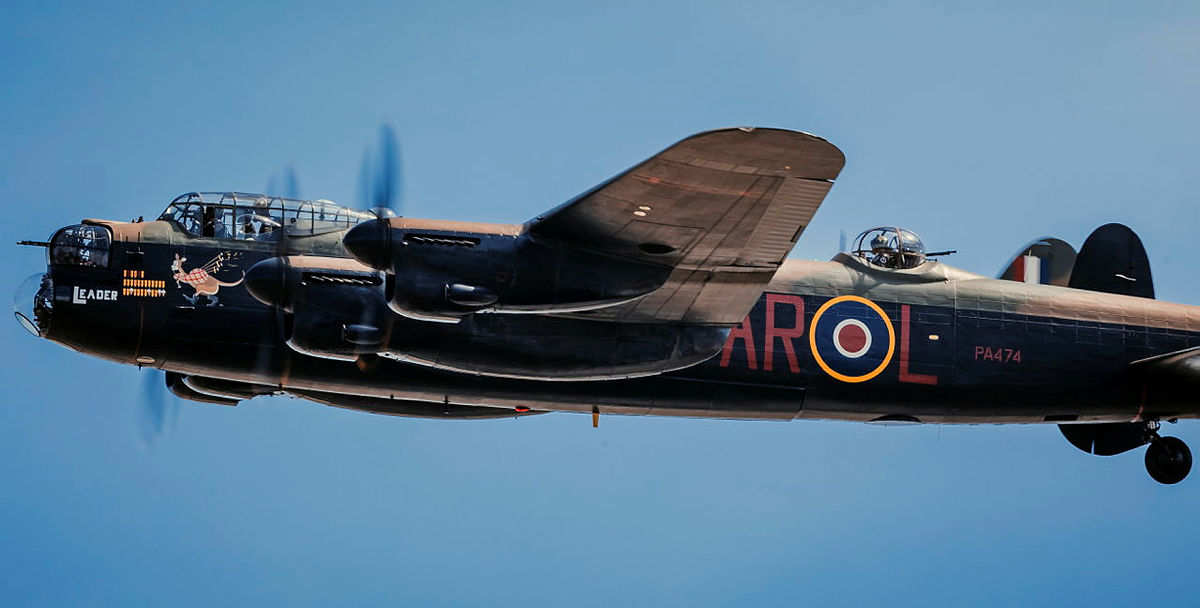
What was it like to fly in an Avro Lancaster?
Recollecting his memories of the time he spent flying in Lancasters, Mr Waughman explained that the now legendary heavy bombers were "just another member of the crew" but that those who flew in them "got very, very fond" of the "great piece of kit".
Lancasters were crewed by a team of seven. In the cockpit would be the pilot and flight engineer while on his stomach in the compartment underneath them, the bomb aimer would be releasing bombs as well as manning the front machine-gun.
The navigator and wireless operator would be situated near the pilot and flight engineer.
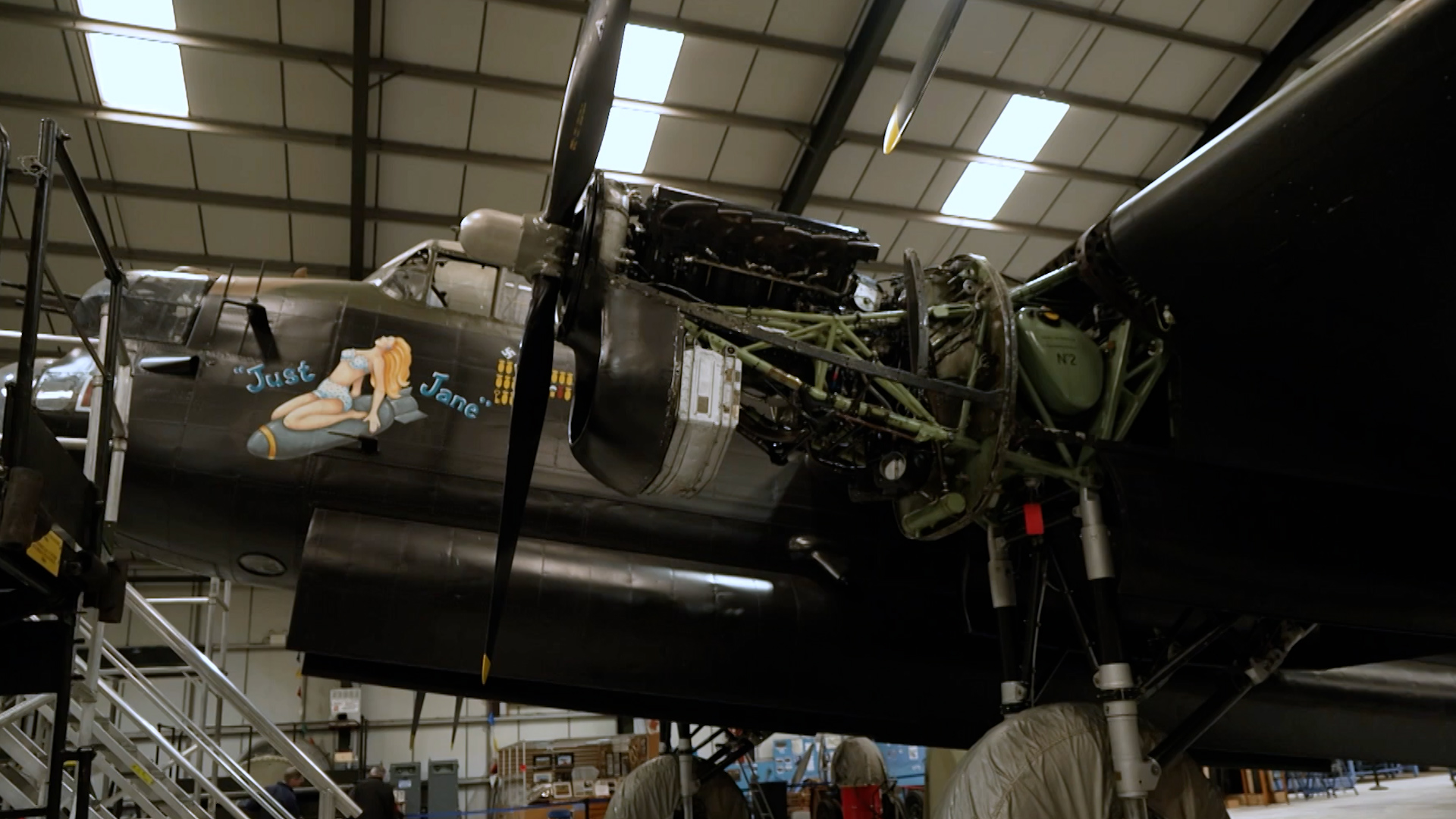
And last but certainly not least, the ventral and rear gunners would be found at the back of the heavy bomber.
While small inside, making it difficult to get in and out, the bombers were considered by those who flew them to be unique in both construction and handling.
Mr Waughman said: "It really was a wonderful little beast.
"Once you got into the seat you didn't move because there's no second... control so you just sat there.
"The longest time we... sat there we were flying for 10 hours [and] 20 minutes."
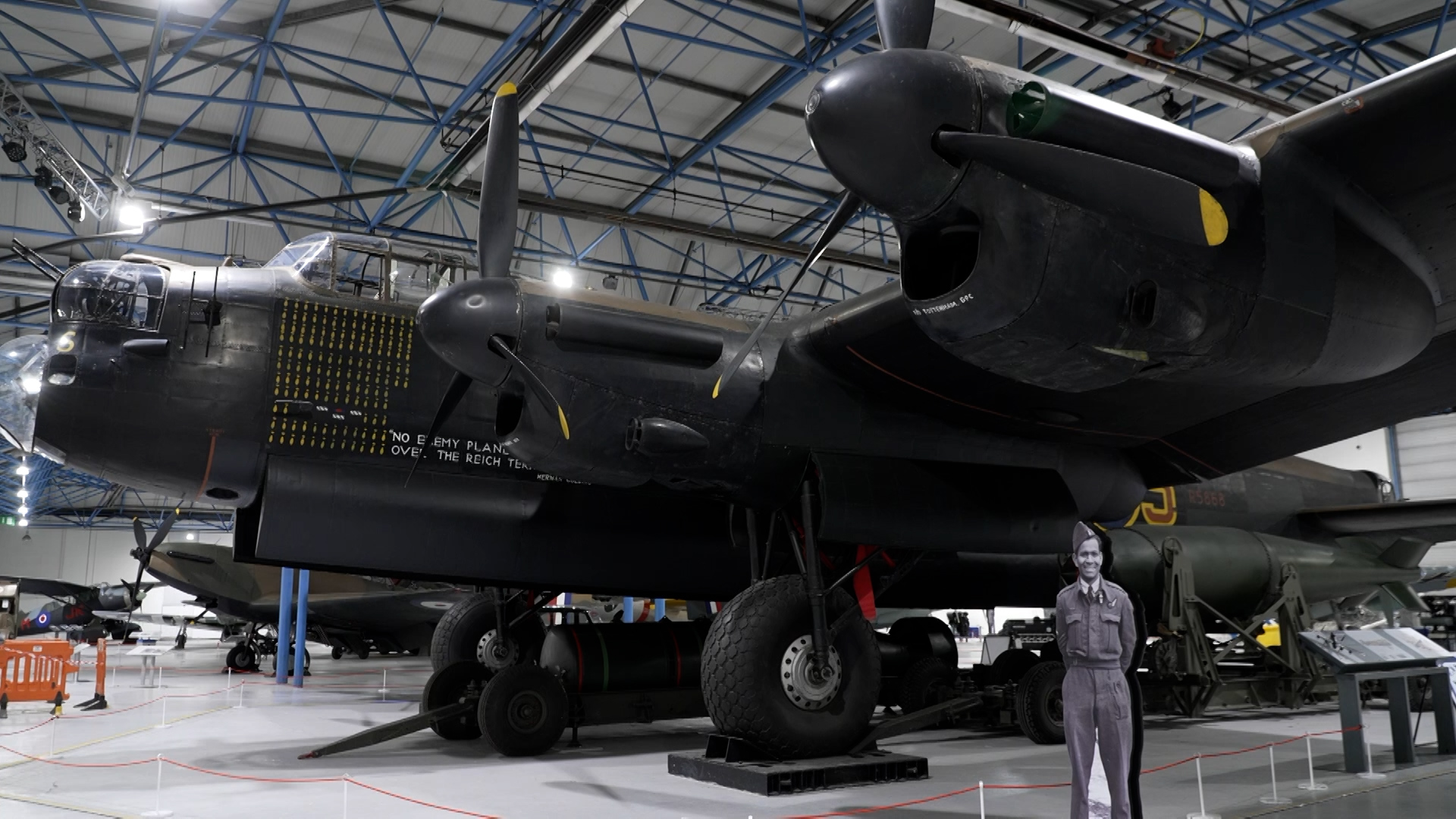
When empty, Lancasters weighed 36,900lb and were able to carry 33,100lb in fuel and bombs.
The aircraft's large bomb-hauling capacity meant Lancasters could be modified to carry the bouncing bombs used in the famous Dambusters raid.
The Lancaster was also able to haul the 22,000lb Grand Slam Earthquake bomb.
About the deadly bomb, Mr Keen said: "The Lancaster was developed so that eventually it could carry a massive... 22,000lb bomb – the Grand Slam – designed by the brilliant engineer Barnes Wallace, to destroy targets which were apparently impervious to bombs."
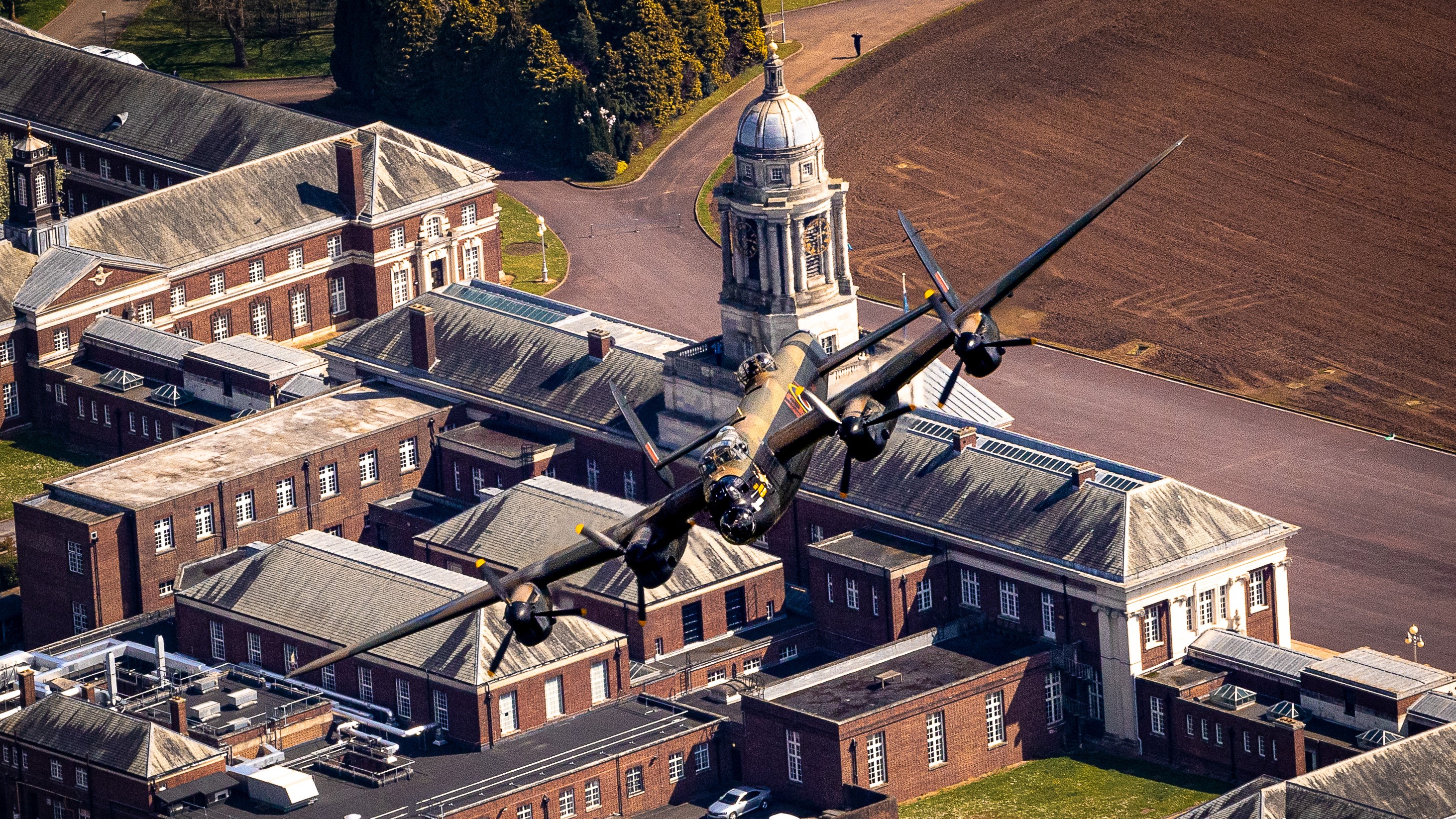
Due to heavy losses sustained in daylight operations in the aircraft's infancy, it was discovered Lancasters were most efficient when they operated at night.
It takes a skilled pilot with immense concentration to fly at night as, according to Mr Keen, "it's a frightening experience".
Former Lancaster pilot Mr Waughman said: "It was a heavy aircraft to fly on those occasions but I did it and you could evade from both searchlights, guns and fighters.
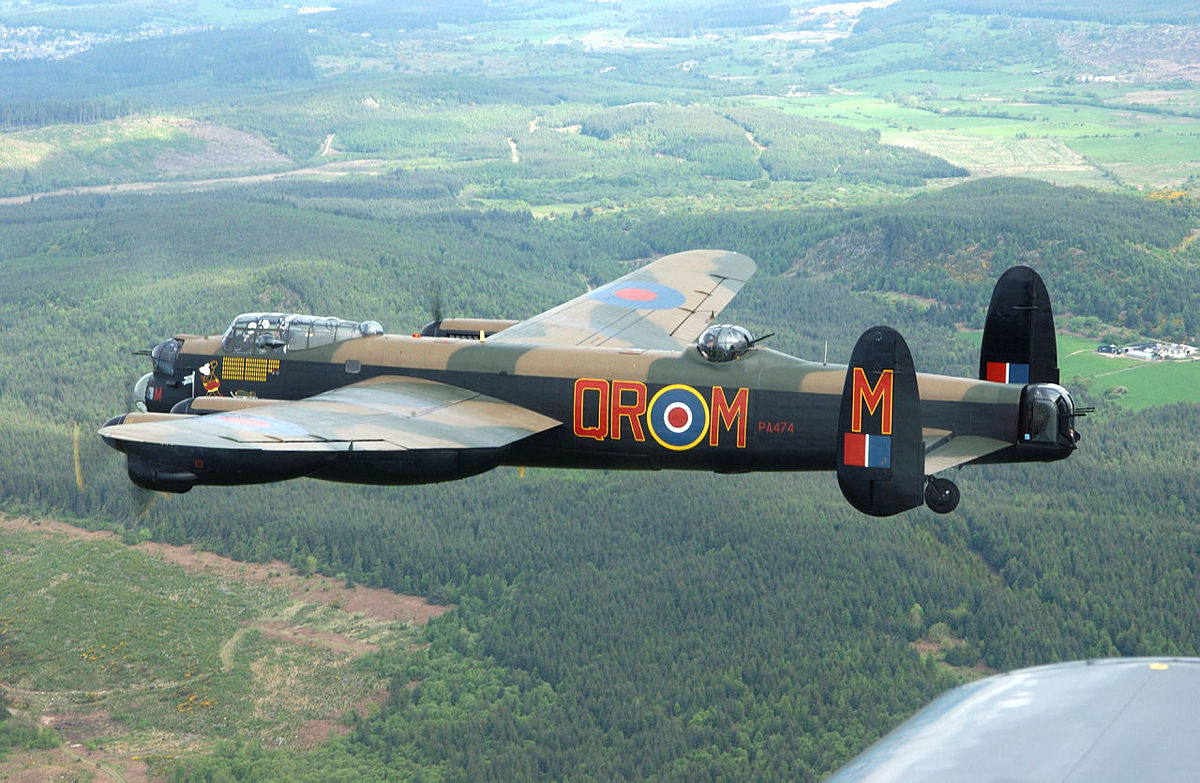
"We had lots of experience, like all the lads on operations, you all have this experience of using this fighter evasion exercise.
"If you said you weren't frightened of doing it, you're telling porkies.
"Coming back off ops, coming back over the UK, you got all the crew together and we all sang 'coming in on a wing and a prayer'."
Talking of wings, Lancasters also carried feathered passengers – a homing pigeon for every plane, to be released only in case of radio failure.
The returning Lancasters would arrive home battered and almost beyond repair but, no matter how challenging the situation they found themselves in, the air crew felt they could rely on their Lancaster to get them home.
Mr Waughman said: "Coming back on two engines, you knew you were going to get back, slowly, but you knew you were going to get back so it really was an aeroplane to be proud of flying.
"It was such a reliable piece of machinery and the people who designed it deserve tremendous credit for what they achieved."
